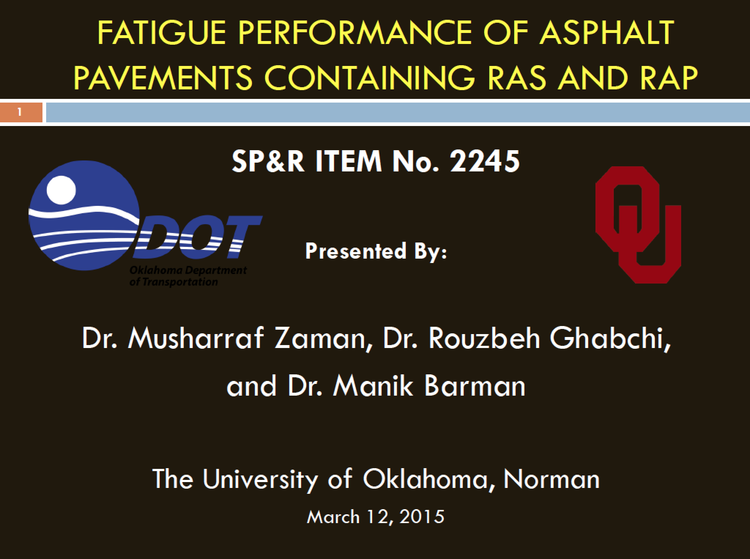Fatigue Performance of Asphalt Pavements Containing RAS and RAP
March 12, 2015
Fatigue Performance of Asphalt Pavements Containing RAS and RAP
Click to download presentation slides (PDF)
Abstract: With increased environmental awareness, using reclaimed asphalt shingles (RAS) and reclaimed asphalt pavement (RAP) in pavements have been gaining momentum nationally and globally. Despite their advantages, there are national concerns associated with fatigue and low-temperature cracking potential of pavements when containing increased amounts of RAS and RAP. This workshop is focused on the fatigue performance of hot-mix asphalt (HMA) containing RAS and RAP. Specifically, changes in fatigue resistance and cycles to fatigue failure with changes in the amount of RAS and RAP will be discussed in light of laboratory data from flexural fatigue (four-point beam) and axial fatigue (cyclic direct tension) tests on laboratory compacted specimens. Effect of virgin binder grade on the fatigue performance will also be examined. In addition, the effect of RAS and RAP on creep compliance and dynamic modulus of HMA will be highlighted. The laboratory study covered in this workshop involved eight different surface course mixes (S4) with different types of asphalt binders (i.e., PG 64-22 OK and PG 70-28 OK). Mixes were designed using different amounts of RAS and RAP and tested in the laboratory. The amount of RAS and RAP in HMA mixes varied, but the total amount of replaced binder was kept limited to 30% (binder replacement). The results from this study were used to make recommendations on the use of RAS and RAP in HMA mixes. These recommendations will be discussed in this workshop.

